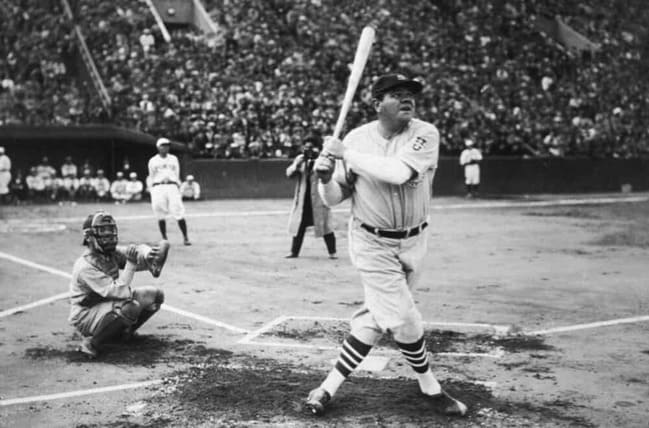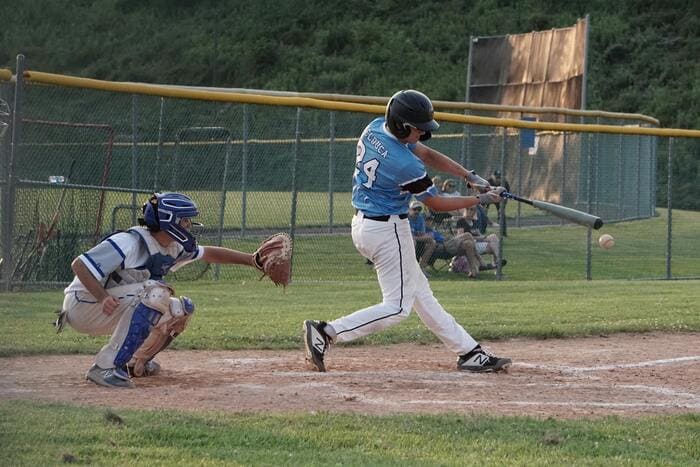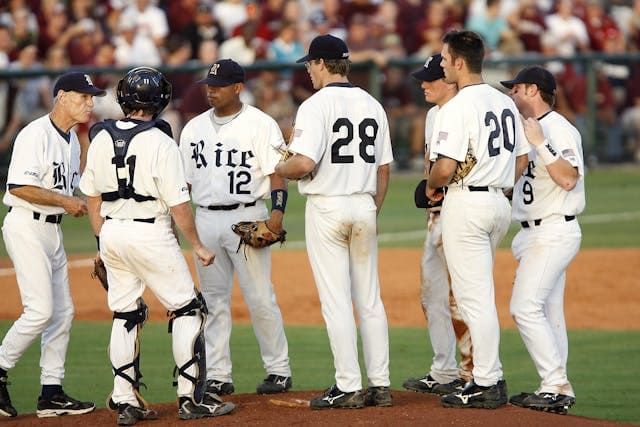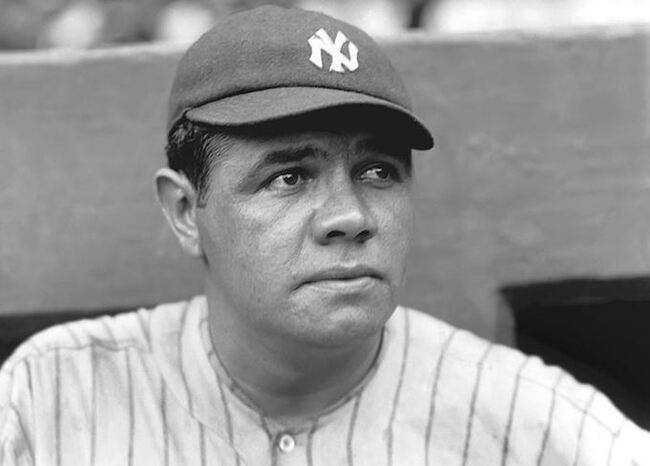History of Baseball: From Its Origins to Modern Times
Baseball is one of the most popular sports in the United States, with millions of fans tuning in to watch games each year. The sport has a rich history that dates back to the mid-19th century, and it has played an important role in American culture ever since. Whether you’re a die-hard fan or just curious about the sport, learning about the history of baseball can give you a greater appreciation for the game and its enduring popularity.
The origins of baseball are somewhat murky, with several different theories about how the sport was invented. One popular theory is that baseball evolved from an English game called rounders, which was played by children as early as the 18th century.
Another theory is that baseball was developed independently in the United States, with the first game played in Hoboken, New Jersey, in 1846. Regardless of its origins, baseball quickly became a popular pastime in America, with amateur and professional leagues forming in cities across the country.
Origins and Early History
Baseball is a sport that has been enjoyed by generations of Americans, but its roots can be traced back to older bat-and-ball games played in England. In the early 18th century, a game called “rounders” was played in England. It involved hitting a ball with a bat and running around a diamond-shaped field. This game was brought to North America by English immigrants, where it evolved into the game we know today as baseball.
The Knickerbocker Rules
In 1845, a group of men in New York City formed the Knickerbocker Baseball Club. They created a set of rules for their version of the game, which became known as the “Knickerbocker Rules.” These rules established many of the basic rules of baseball, including the diamond-shaped field, the number of players on each team, and the method of scoring. The rules also established the use of a hard ball instead of a soft ball, which made the game faster and more exciting.
Overall, baseball has a rich history that has evolved over time. From its roots in older bat-and-ball games played in England to the modern game played today, baseball has remained a beloved pastime for generations of Americans.
Professional Era
The Professional Era of baseball began in 1869 with the establishment of the first fully professional baseball team, the Cincinnati Red Stockings. This marked a significant turning point in the history of baseball.
The National League
In 1876, the National League was formed, becoming the first professional baseball league. The league consisted of eight teams, including the Boston Red Caps, Chicago White Stockings, and Cincinnati Red Stockings. The National League was known for its strict rules and regulations, which helped to standardize the game and make it more organized.
The American League
In response to the National League’s dominance, the American League was founded in 1901. The league was initially seen as a minor league, but it quickly grew in popularity and became a major league in 1903. The American League was known for its aggressive play and was often seen as the “rebel” league compared to the more conservative National League.
The World Series
The first modern World Series took place in 1903 between the champions of the National League and the American League. The Boston Red Sox (then known as the Boston Americans) defeated the Pittsburgh Pirates, marking a new era of championship play. The World Series quickly became one of the most popular and prestigious events in all of sports, and it continues to be a major part of the baseball season today.
The Dead-Ball Era
Baseball has gone through several eras, each with its own unique characteristics. One of the most notable of these eras is the Dead-Ball Era, which lasted from about 1900 to 1920. This era was characterized by low-scoring games, a lack of home runs, and a greater emphasis on strategy and defense.
Key Players and Teams
During the Dead-Ball Era, a number of players and teams stood out as being particularly successful. One of the most notable players of the era was Honus Wagner, who played for the Pittsburgh Pirates. Wagner was known for his strong defensive skills and his ability to hit for both power and average. Other notable players of the era included Ty Cobb, Christy Mathewson, and Walter Johnson.
In terms of teams, the Boston Red Sox were particularly successful during the Dead-Ball Era, winning five World Series titles between 1903 and 1918. Other successful teams of the era included the Chicago Cubs, the New York Giants, and the Philadelphia Athletics.
Strategic Play Styles
One of the defining characteristics of the Dead-Ball Era was the emphasis on strategic play styles. With home runs being relatively rare, teams focused on manufacturing runs through bunting, stealing bases, and hitting-and-running. Pitchers also played a more prominent role during this era, with many games featuring low-scoring pitcher’s duels.
In addition to these strategic play styles, the Dead-Ball Era was also characterized by a greater emphasis on defense. With runs being at a premium, teams worked hard to prevent their opponents from scoring. This often meant playing a more conservative style of baseball, with players focusing on making the routine plays rather than trying to make spectacular ones.
Overall, the Dead-Ball Era was a challenging time for baseball players, but it also produced some of the greatest players in the history of the game. The era came to an end with the introduction of a livelier ball and changes to the rules of the game that favored hitting.
The Live-Ball Era
Baseball has gone through several eras, each with its own unique characteristics that shaped the game. One such era is the Live-Ball Era, which began in 1920 and continues to the present day. This period is defined by a series of rule changes that made the ball more lively, leading to a dramatic rise in offensive statistics. In this section, we’ll take a closer look at the Live-Ball Era and its impact on the game of baseball.
Changes in the Game
The Live-Ball Era was marked by several significant rule changes that made the game more offense-oriented. One of the most important changes was the introduction of a new ball that was wound tighter and had a cork center. This made the ball more lively and easier to hit, resulting in more home runs and higher-scoring games. In addition, the pitcher was no longer allowed to spit on the ball or scuff it, which made it more difficult to throw pitches with a lot of movement.
Another significant change was the ban on the spitball, a pitch that had been legal for many years. The spitball was a pitch that was moistened with saliva or some other substance, which made it difficult to hit. However, the ban on the spitball made it easier for batters to hit the ball, which contributed to the rise in offensive statistics.
Rise of the Home Run
One of the most significant changes in the Live-Ball Era was the rise of the home run. With the ball being more lively and easier to hit, batters were able to hit more home runs than ever before. This led to a shift in the way the game was played, with teams focusing more on power hitting than on small ball and strategy.
The most famous player of the Live-Ball Era was Babe Ruth, who hit a record-breaking 60 home runs in 1927. Ruth’s power hitting revolutionized the game and made him a national icon. Other players, such as Lou Gehrig and Jimmie Foxx, also became known for their power hitting during this era.
Integration and Expansion
Baseball’s history is marked by significant moments of change, and one of the most important of these was the integration of the sport. Prior to 1947, baseball was segregated, with African American players not allowed to play in the Major Leagues. However, this changed when Jackie Robinson, a talented player from the Negro Leagues, was signed by the Brooklyn Dodgers. Breaking the Color Barrier was a momentous occasion, not only for baseball but also for American society as a whole. Robinson’s success on the field paved the way for other African American players to join the Major Leagues, and helped to change attitudes towards race in America.
Breaking the Color Barrier
Jackie Robinson’s debut in 1947 was met with a great deal of resistance from fans, players, and even some of his own teammates. However, Robinson’s talent was undeniable, and he quickly proved himself to be one of the best players in the league. His success helped to break down barriers and pave the way for other African American players to join the Major Leagues. Today, Robinson is remembered as a hero and a trailblazer, and his legacy lives on in the annual celebration of Jackie Robinson Day.
League Expansion
In addition to integration, the post-war period was marked by significant League Expansion. The years following World War II saw the creation of several new teams, including the Houston Colt .45s (now the Astros), the Los Angeles Angels, and the New York Mets. This expansion helped to bring baseball to new parts of the country, and helped to make the sport even more popular than it already was. Today, Major League Baseball is made up of 30 teams, and the sport is played and enjoyed by millions of people around the world.
These changes helped to make baseball more inclusive and accessible, and helped to cement its place as one of the most popular sports in the world.
The Modern Game
Baseball has come a long way since its origins in the 18th century. The game has seen many changes and advancements in strategy and technology. Here are some of the most significant developments in the modern game.
Advancements in Strategy
One of the most significant advancements in baseball strategy is the use of statistical analysis, commonly known as sabermetrics. Sabermetrics involves using data to analyze player and team performance, which helps managers make informed decisions about strategy and player selection. This approach was popularized by the book “Moneyball” by Michael Lewis, which chronicled the success of the Oakland Athletics baseball team in the early 2000s.
Another significant advancement in strategy is the use of defensive shifts. Defensive shifts involve moving fielders from their traditional positions to better defend against a particular hitter. This tactic has become increasingly popular in recent years, as teams use data to identify hitters’ tendencies and adjust their defense accordingly.
Technological Influences
Technology has also had a significant impact on the modern game of baseball. One of the most significant technological advancements is the use of instant replay to review calls made by umpires. This technology has helped ensure that calls are made correctly, which has led to a more fair and accurate game.
Another significant technological advancement is the use of pitch-tracking systems, such as PitchFX and Statcast. These systems use cameras and sensors to track the trajectory and movement of pitches, which provides valuable data for pitchers, batters, and coaches. This data can help pitchers refine their pitches and batters adjust their swings to better hit the ball.
These developments have helped make the game more fair, accurate, and data-driven. As the game continues to evolve, it will be interesting to see what new advancements will emerge.
Globalization of Baseball
Baseball has been a popular sport in the United States for over a century, but its popularity has spread worldwide in recent years. The globalization of baseball has been influenced by a number of factors, including international competitions and the sport’s growing influence outside the United States.
International Competitions
International competitions have played a major role in the globalization of baseball. The World Baseball Classic, for example, is an international baseball tournament that was first held in 2006. The tournament features teams from around the world, including the United States, Japan, and the Dominican Republic. The tournament has helped to promote baseball in countries where the sport is not as popular, and has also helped to increase interest in the sport among fans worldwide.
Influence Outside the United States
Baseball’s growing influence outside the United States has also contributed to its globalization. In Japan, for example, baseball has been a popular sport for over a century. Japanese baseball teams have won numerous international championships, and Japanese players have also found success in the United States Major League Baseball (MLB). Similarly, in Latin America, baseball has been a part of the culture for many years, with many players from the region now playing in the MLB.
In recent years, other countries such as South Korea, Taiwan, and Australia have also developed strong baseball programs, producing players who have found success in the MLB. This growing interest in baseball outside the United States has helped to make the sport more global, with more fans and players worldwide.
As the sport continues to grow in popularity worldwide, we can expect to see even more global expansion in the years to come.
Cultural Impact of Baseball
Baseball has had a significant impact on American culture, from literature to film and beyond. The sport has been a source of inspiration for countless writers and filmmakers, and has helped to shape the American identity.
Baseball in Literature and Film
Baseball has served as a source of inspiration for many writers and filmmakers. From classics such as “The Natural” and “Field of Dreams” to more recent films like “Moneyball,” baseball has been a central theme in many movies. These films often explore the human drama and emotion that surrounds the game, as well as the cultural significance of baseball in American society.
Similarly, baseball has been a frequent subject of literature. From the works of Ernest Thayer to the novels of Bernard Malamud, baseball has been a rich source of material for writers. These works often explore the game’s mythology, as well as its place in American culture and history.
Baseball and American Identity
Baseball has been called America’s national pastime, and for good reason. The game has played a significant role in shaping American identity, serving as a symbol of American values such as hard work, perseverance, and fair play. Baseball has also been used as a tool for social change, as seen in the integration of the sport in the 1940s and 1950s.
Baseball has also been a source of regional pride, with many cities and towns across the country rallying around their local teams. This has helped to create a sense of community and belonging, as well as promoting a sense of civic pride.
Challenges and Controversies
Steroids and Performance Enhancing Drugs
Baseball has had a tumultuous relationship with steroids and performance-enhancing drugs (PEDs). The use of these substances has been a controversial issue in the sport since the 1990s. The issue came to a head in the early 2000s, when several high-profile players were accused of using steroids and other PEDs. The most famous of these players was Barry Bonds, who broke the single-season and all-time home run records while allegedly using performance-enhancing drugs.
The use of steroids and PEDs has been linked to a number of health problems, including heart disease, liver damage, and cancer. In addition, the use of these substances has been shown to give players an unfair advantage over their opponents. As a result, baseball has implemented strict rules and penalties for players who are caught using steroids or other PEDs.
Labor Disputes and Strikes
Baseball has also had its fair share of labor disputes and strikes throughout its history. The most famous of these disputes was the 1994-95 strike, which resulted in the cancellation of the World Series for the first time in 90 years. The strike was caused by a disagreement between the players’ union and the owners over revenue sharing and salary caps.
Labor disputes and strikes have had a significant impact on the sport, both financially and in terms of fan interest. The 1994-95 strike, for example, resulted in a significant drop in attendance and television ratings. In addition, labor disputes have led to the loss of games and even entire seasons, which has had a negative impact on the sport’s popularity.
Despite these challenges and controversies, baseball has remained one of the most popular sports in the world. The sport has a rich history and tradition, and continues to evolve and adapt to the changing times. As long as there are passionate fans and talented players, baseball will continue to thrive and inspire future generations.
Legendary Figures
Baseball has been home to many legendary figures over the years. These figures have made significant contributions to the sport, and their impact can still be felt today. Here are some of the most influential players, iconic managers, and pioneers of the sport.
Influential Players
Baseball has seen many great players over the years, but some have had a more significant impact than others. One such player is Babe Ruth, who is widely regarded as one of the greatest baseball players of all time. Ruth’s career spanned over 22 seasons, during which he set numerous records and won seven World Series titles.
Another influential player is Jackie Robinson, who broke the color barrier in baseball when he joined the Brooklyn Dodgers in 1947. Robinson’s courage and determination paved the way for other black players to follow in his footsteps, and he is remembered as a true trailblazer.
Iconic Managers
Baseball managers play a crucial role in the success of their teams, and some have become legends in their own right. One such manager is Casey Stengel, who led the New York Yankees to seven World Series titles in the 1940s and 1950s. Stengel’s innovative strategies and leadership style set the standard for future managers.
Another iconic manager is Joe Torre, who led the Yankees to four World Series titles in the late 1990s and early 2000s. Torre’s calm demeanor and ability to manage egos made him a beloved figure in the baseball world.
Pioneers of the Sport
Finally, there are the pioneers of the sport, those who helped shape baseball into what it is today. One such pioneer is Abner Doubleday, who is credited with inventing baseball in 1839. While the true origins of baseball are disputed, Doubleday’s contributions to the sport are undeniable.
Another pioneer is Branch Rickey, who signed Jackie Robinson to the Brooklyn Dodgers and helped break the color barrier in baseball. Rickey’s commitment to social justice and equality paved the way for a more inclusive sport.
These are just a few of the many historical figures who have left their mark on the game of baseball. Their contributions have helped make baseball one of the most popular sports in the world.
Frequently Asked Questions
What were the early forms of baseball called?
The early forms of baseball were called “town ball” and “rounders”. These games were played in the 18th and early 19th centuries in America and England respectively. They were played with a ball and a bat, but the rules varied from place to place.
Who is credited with inventing the game of baseball?
The game of baseball was not invented by a single person. Rather, it evolved over time from earlier bat-and-ball games. However, the modern version of baseball is often credited to Alexander Cartwright, who helped establish the rules for the game in the mid-19th century.
When was the first professional baseball team established?
The first professional baseball team was established in 1869. The Cincinnati Red Stockings were the first team to pay their players, paving the way for the professionalization of the sport.
Which team emerged victorious in the inaugural MLB game?
The inaugural Major League Baseball (MLB) game was played on April 22, 1876, between the Boston Red Stockings and the Philadelphia Athletics. Boston emerged victorious, winning by a score of 6-5.
At what point did the modern era of baseball commence?
The modern era of baseball is generally considered to have begun in the early 1900s. This was a time of great change for the sport, with the introduction of new rules and equipment, as well as the rise of legendary players like Babe Ruth.
In what ways has the game of baseball changed since its inception?
The game of baseball has changed in many ways since its inception. Some of the most significant changes include the introduction of new rules, such as the designated hitter in the American League, and the use of technology to aid umpires in making calls. The equipment used by players has also evolved, with improvements to gloves, bats, and protective gear. Finally, the style of play has changed, with a greater emphasis on power hitting and the use of specialized relief pitchers.
RECENT POSTS
History of Baseball
History of Baseball: From Its Origins to Modern TimesBaseball is one of the most popular sports in the United States, with millions of fans tuning in to watch games each year. The sport has a [...]
Hunting Falconry
History of Hunting Falconry: An Overview of Falconry's Evolution and Significance Are you interested in learning about the ancient practice of hunting with trained birds of prey? Falconry has been practiced for thousands of [...]
Hunting Destinations in 2024
Hunting Destinations in 2024: Top Picks for Avid Hunters Are you looking for exciting hunting destinations to explore in 2024? Whether you're a seasoned hunter or just starting, there are plenty of options available [...]
History of hunting dogs
Explore the History and Significance of Hunting Dogs: A Comprehensive Guide If you're a hunting enthusiast, then you know the importance of having a reliable hunting dog by your side. Hunting dogs have been [...]
Hunting as a Hobby
Hunting as a Hobby: An Overview Hunting is a popular outdoor activity enjoyed by millions of people worldwide. While some hunt for food, others do it as a hobby. Hunting as a hobby can [...]
















